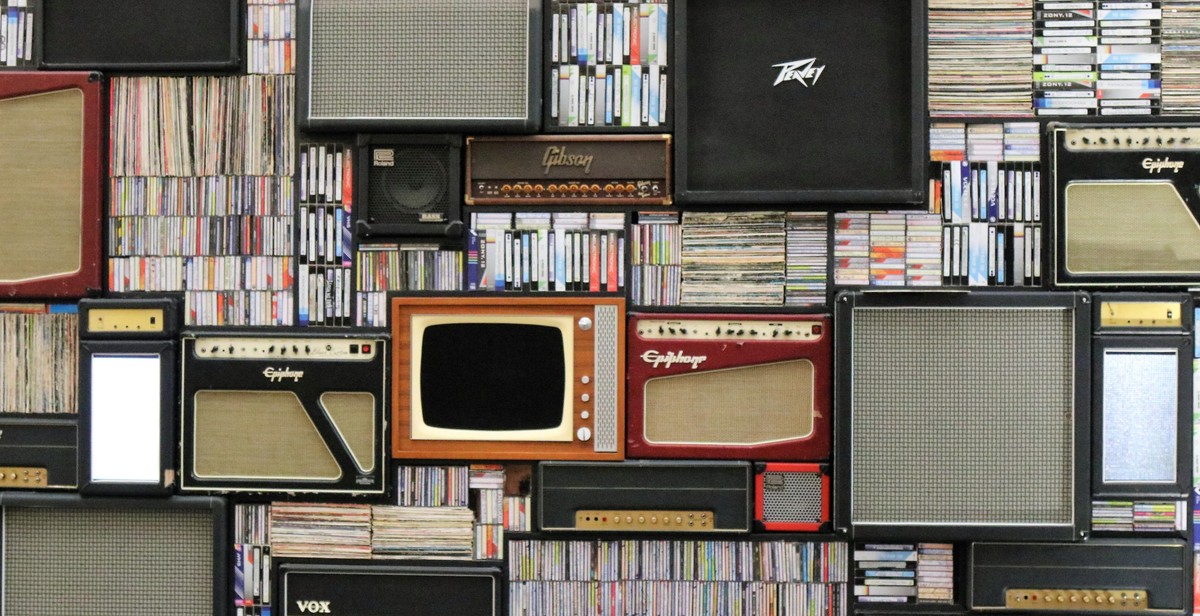How to Organize and Declutter Your Digital Music Library
With the rise of digital music, it’s easier than ever to amass a large collection of songs. However, with that convenience comes the challenge of keeping your music library organized and clutter-free. A disorganized music library can make it difficult to find the songs you want to listen to and can lead to frustration. In this article, we’ll provide you with practical tips on how to organize and declutter your digital music library.
Why It’s Important to Organize Your Digital Music Library
Having a well-organized digital music library has many benefits. Firstly, it makes it easier to find the song you’re looking for, saving you time and effort. Secondly, it can help you discover new music and artists by allowing you to browse your collection in a more efficient manner. Finally, a well-organized music library can enhance your listening experience by providing you with a more seamless and enjoyable experience.
Steps to Organize Your Digital Music Library
Here are some steps you can take to organize and declutter your digital music library:
- Create a consistent naming convention for your files
- Organize your music by artist, album, and genre
- Delete duplicate songs and low-quality files
- Use metadata to your advantage
- Utilize playlists to create customized listening experiences
By following these steps, you can transform your cluttered music library into a well-organized and enjoyable collection that you can enjoy for years to come.
Why Organizing Your Digital Music Library is Important
With the increasing popularity of digital music, it’s become easier than ever to amass a vast collection of songs and albums. However, without proper organization, your digital music library can quickly become cluttered and difficult to navigate. Here are some reasons why organizing your digital music library is important:
Easy Access to Your Favorite Music
By organizing your digital music collection, you can easily find and access your favorite songs and albums. For example, you can create playlists based on your mood, genre, or artist, making it simple to enjoy your favorite tunes without having to search through a cluttered library.
Save Time Searching for Songs
Without proper organization, searching for a specific song or album can be a time-consuming and frustrating process. By organizing your digital music library, you can save time and easily find what you’re looking for. You can also use software tools such as music players or organization apps that help you to sort and find music files quickly.
Avoid Duplicate Songs and Albums
Another benefit of organizing your digital music library is that you can avoid duplicate songs and albums. With a cluttered library, it’s easy to accidentally download or purchase the same song or album multiple times. By organizing your library, you can identify and delete duplicates, freeing up valuable storage space on your computer or mobile device.
Overall, organizing your digital music library is an essential task for any music lover. By taking the time to properly organize your collection, you can enjoy easy access to your favorite music, save time searching for songs, and avoid duplicates. In the next section, we’ll explore some tips and strategies for decluttering and organizing your digital music library.

How to Start Organizing Your Digital Music Library
Having a disorganized digital music library can be frustrating and time-consuming when you’re looking for a particular song or artist. To avoid this, it’s essential to organize and declutter your digital music library. Here are some steps to get you started:
Choose a Music Management Software
The first step in organizing your digital music library is to choose a music management software. There are several music management software options available, such as iTunes, Windows Media Player, and MediaMonkey. Choose the one that suits your needs and preferences.
Create a Folder Structure
Once you’ve chosen your music management software, create a folder structure that makes sense to you. You can organize your music by artist, album, genre, or year. For example, create a folder for each artist, and then subfolders for each album. This will make it easier to find the music you’re looking for.
Example:
| Artist | Album |
|---|---|
| Bob Dylan | Highway 61 Revisited |
| Blonde on Blonde | |
| The Beatles | Revolver |
| Abbey Road |
Rename and Organize Your Music Files
After creating your folder structure, rename your music files to make them more organized. Use a consistent naming convention, such as “Artist – Song Title.” This will make it easier to find and sort your music files. You can also use software like MP3Tag to automate this process.
Add Metadata to Your Music Files
Metadata is information about your music files, such as the artist, album, and track number. Adding metadata to your music files will make it easier to search and sort your music library. You can add metadata manually in your music management software or use software like MusicBrainz Picard to automate this process.
By following these steps, you can organize and declutter your digital music library, making it easier to find and enjoy your favorite tunes.

Tips for Maintaining Your Digital Music Library
Organizing and decluttering your digital music library can be a daunting task, but with the right approach, it can be a breeze. Here are some tips to help you maintain your digital music library:
Regularly Backup Your Music Library
Backing up your music library is essential to ensure that you don’t lose your music collection in case of a computer crash or hard drive failure. Consider using an external hard drive or cloud-based storage solution to store a copy of your music library. You can set up automatic backups to ensure that your music library is always up-to-date.
Delete Unwanted Songs and Albums
Keeping unwanted songs and albums in your music library can clutter your collection and make it difficult to find the music you love. Take the time to go through your music library regularly and delete any songs or albums that you no longer listen to. This will free up space on your hard drive and make it easier to find the music you love.
Download High-Quality Music Files
Downloading high-quality music files can make a big difference in the sound quality of your music. Consider downloading music files with a bit rate of 320 kbps or higher to ensure that you get the best sound quality possible. While high-quality music files may take up more space on your hard drive, the improved sound quality is worth it.
By following these tips, you can maintain a well-organized and clutter-free digital music library that will bring you joy for years to come.
Conclusion
Organizing and decluttering your digital music library can seem like a daunting task, but it doesn’t have to be. By following the steps outlined in this article, you can streamline your music collection and make it easier to find the songs you love.
Start by taking inventory of your current collection and making a plan for how you want to organize it. Consider using a music management software to help you keep track of your music files and create playlists.
Be sure to also take steps to declutter your collection by deleting duplicate songs, outdated files, and tracks you no longer listen to. This will free up space on your device and make it easier to find the music you want.
Finally, consider backing up your music collection to a cloud storage service or an external hard drive to protect your files in case of a computer crash or other disaster.
By following these tips, you can organize and declutter your digital music library and enjoy your favorite tunes without the stress and frustration of a cluttered collection.
| Step | Description |
|---|---|
| Step 1 | Take inventory of your music collection |
| Step 2 | Decide on a system for organizing your music |
| Step 3 | Use a music management software to help you organize your files |
| Step 4 | Delete duplicate songs, outdated files, and tracks you no longer listen to |
| Step 5 | Back up your music collection to a cloud storage service or external hard drive |
